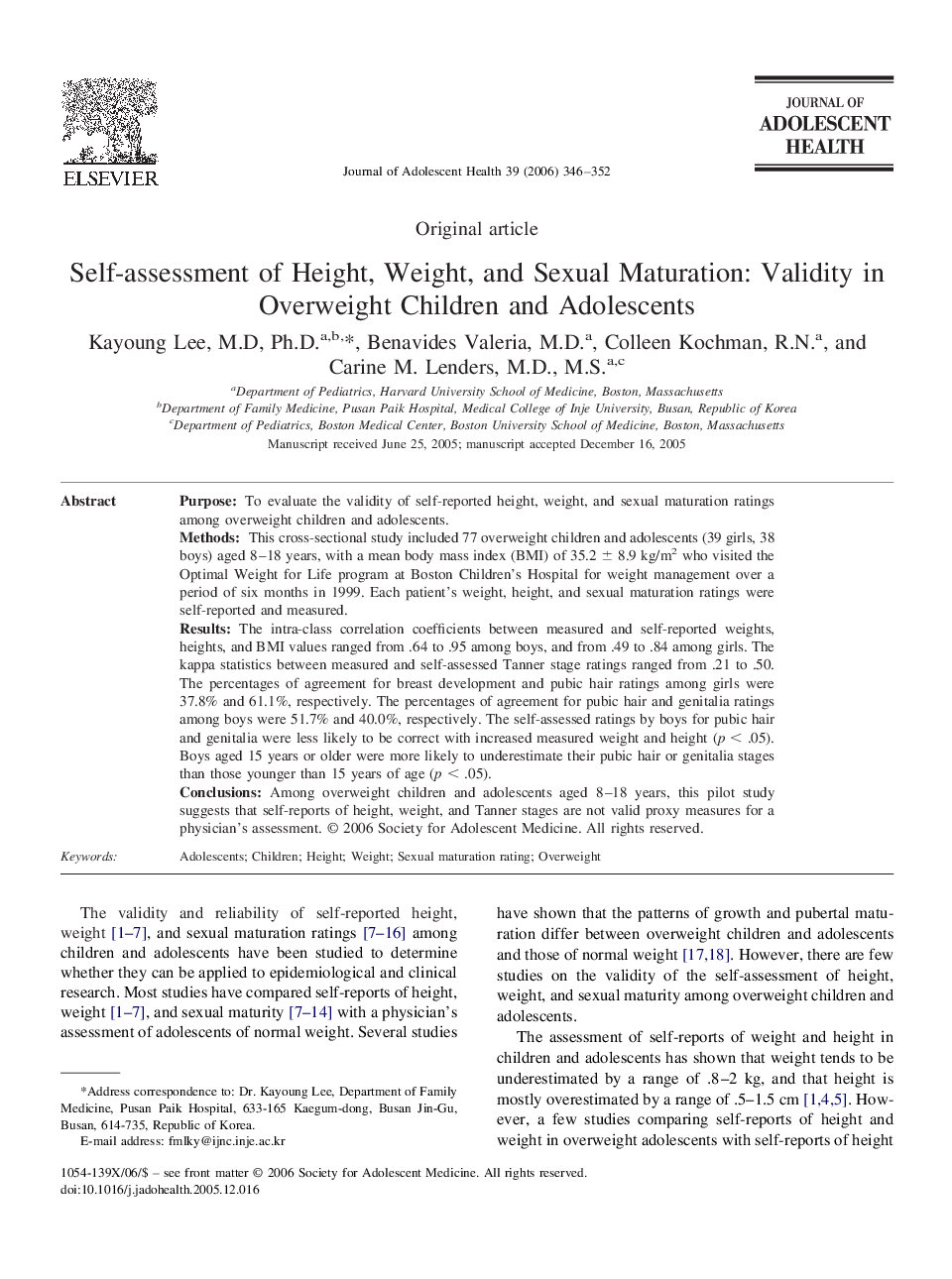| Article ID | Journal | Published Year | Pages | File Type |
|---|---|---|---|---|
| 1081550 | Journal of Adolescent Health | 2006 | 7 Pages |
PurposeTo evaluate the validity of self-reported height, weight, and sexual maturation ratings among overweight children and adolescents.MethodsThis cross-sectional study included 77 overweight children and adolescents (39 girls, 38 boys) aged 8–18 years, with a mean body mass index (BMI) of 35.2 ± 8.9 kg/m2 who visited the Optimal Weight for Life program at Boston Children’s Hospital for weight management over a period of six months in 1999. Each patient’s weight, height, and sexual maturation ratings were self-reported and measured.ResultsThe intra-class correlation coefficients between measured and self-reported weights, heights, and BMI values ranged from .64 to .95 among boys, and from .49 to .84 among girls. The kappa statistics between measured and self-assessed Tanner stage ratings ranged from .21 to .50. The percentages of agreement for breast development and pubic hair ratings among girls were 37.8% and 61.1%, respectively. The percentages of agreement for pubic hair and genitalia ratings among boys were 51.7% and 40.0%, respectively. The self-assessed ratings by boys for pubic hair and genitalia were less likely to be correct with increased measured weight and height (p < .05). Boys aged 15 years or older were more likely to underestimate their pubic hair or genitalia stages than those younger than 15 years of age (p < .05).ConclusionsAmong overweight children and adolescents aged 8–18 years, this pilot study suggests that self-reports of height, weight, and Tanner stages are not valid proxy measures for a physician’s assessment.
